In 1937, a Group of Young "Eagles" Guarded the Skies Over Nanjing
In October 1937, at a critical moment in China's War of Resistance, the Soviet Volunteer Air Squadron travelled thousands of miles to assist. They fought alongside the Chinese military and civilians against the Japanese invaders, forging a deep bond of friendship. The first engagement between the Soviet Volunteer Air Squadron and the Japanese forces took place in Nanjing. These "eagles" from the Soviet Union valiantly defended the skies of Nanjing with their blood and lives.
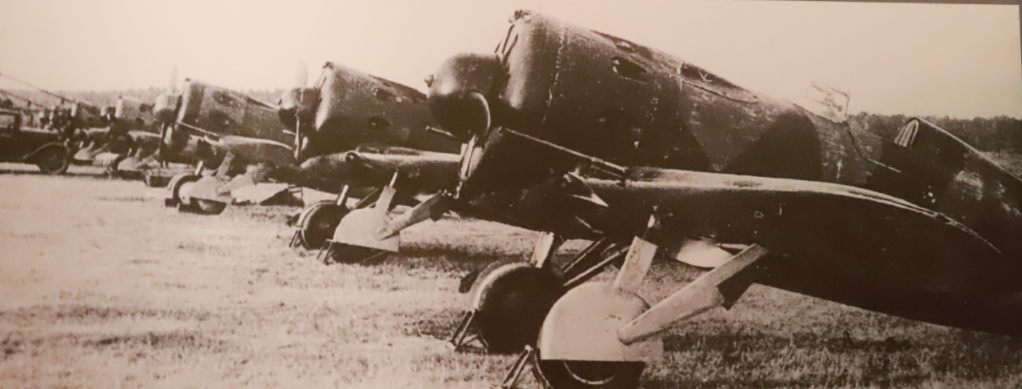
Soviet I-16 Fighter Aircraft
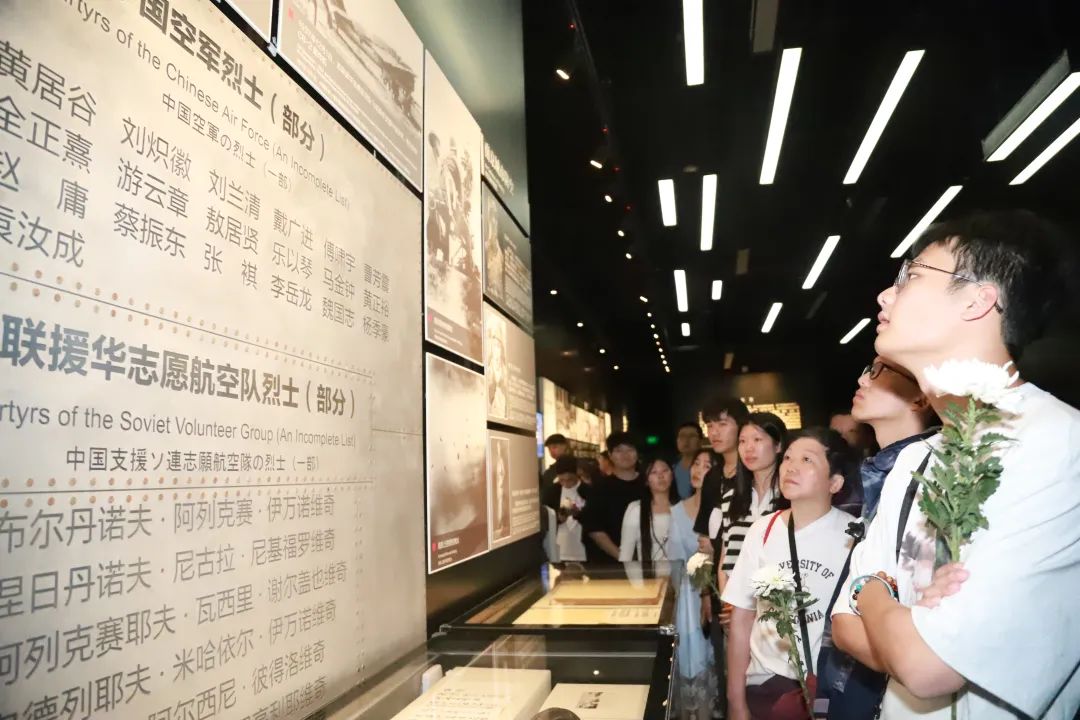
Visitors stop to watch the exhibition panel introducing the Soviet Volunteer Air Squadron at our memorial.
Lifeline of Life and Death
The route taken by the Soviet Volunteer Air Squadron was extremely perilous. The pilots first flew from Alma-Ata and the Transbaikal region to Yining and Dihua (today's Urumqi) in Xinjiang and then on to Lanzhou. Along the way, they faced numerous challenges, including high-altitude airports and a lack of ground navigation facilities.
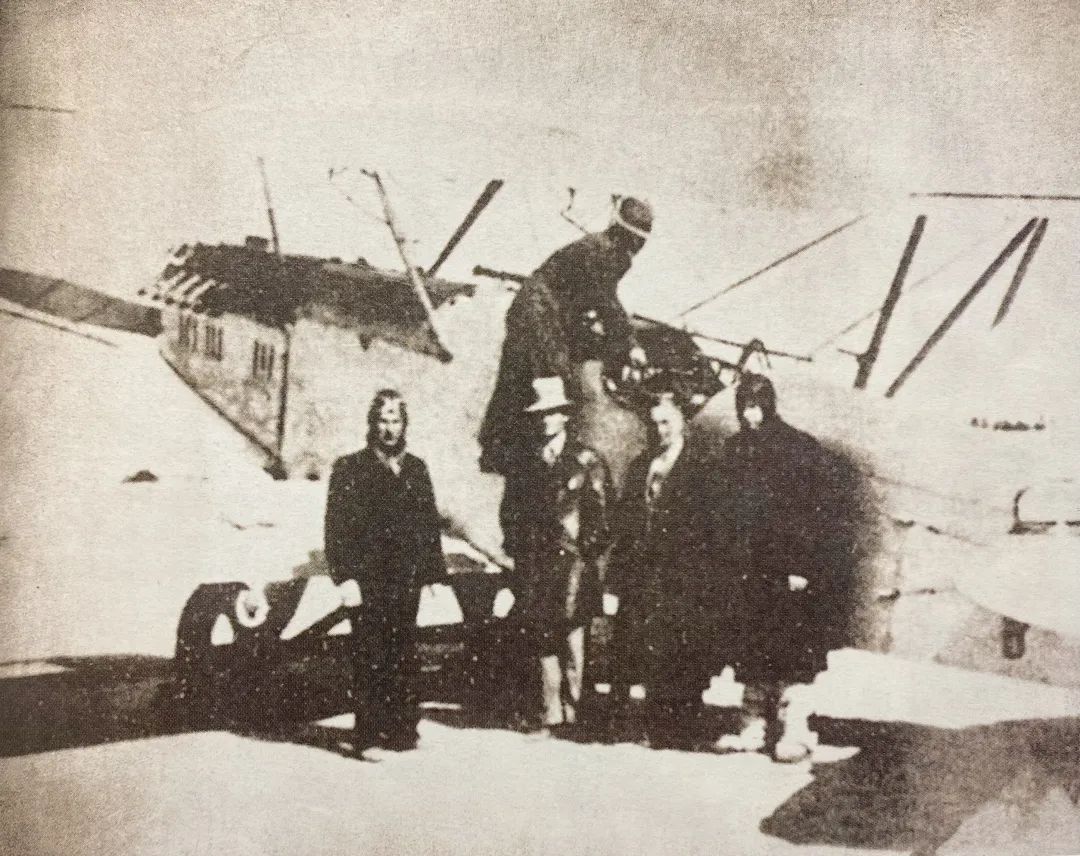
Members of the Soviet Volunteer Air Squadron at Hankou Airport.
Soviet pilot Yuri Malenchenko wrote in his diary about this harrowing flight route: "We flew to China in October 1937, and the entire route involved crossing the deserts and the Tianshan Mountains in Northwest China. We were the first to fly this complex route. There was no communication with the airports, and we had no meteorological information. Flying was often just a matter of luck. We only knew the approximate locations of the airports. As for what awaited us there, what the landing rules were, and so on—all of this we had to learn through practice."
The First Battle of Nanjing
In early November 1937, Soviet-made SB light bombers and I-16 fighters flew eastward from Lanzhou, rushing to Nanjing to join the battle.

The Soviet Volunteer Air Squadron loading bombs onto aircraft before the battle.
At that time, the situation in Nanjing was extremely precarious. The Chinese Air Force had only 30 aircraft left that were capable of taking off for combat. Soviet pilot Sergei Prokofiev described it as a "disastrous situation" in his memoirs. He recalled, "When defending Nanjing, the Chinese Air Force no longer existed as a combat force. When the first Soviet Volunteer Air Squadron arrived in Nanjing in November 1937, the front line was only 60 to 70 kilometers away from the city. Japanese aircraft were extremely rampant, often forming large formations of over 100 planes to bomb Nanjing."
On the afternoon of November 22, 1937, Kidalinsky led a squadron of 20 SB bombers from the bomber regiment to land in Nanjing. That afternoon, the Soviet Volunteer Air Squadron engaged in its first battle over Nanjing.
According to a news dispatch from the Shanghai correspondent of Japan's Asahi Shimbun: "On November 22, the Japanese Navy's air force launched an air raid on Nanjing, where they encountered fighter aircraft of a 'type never seen before' in the skies over Nanjing. The fighters were described as having a 'low-wing monoplane design with retractable landing gear.'"
In this aerial combat, Nikolai Nikiforovich Nizdanov, who was only 24 years old, died heroically. He was the first Soviet pilot to be killed in action during the air battles over Nanjing.
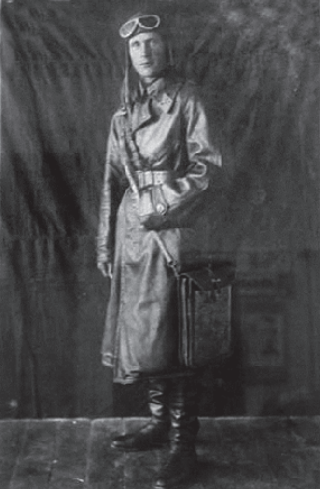
Nikolai Nikiforovich Nizdanov
In his memoirs, Chinese pilot Gao Qingchen wrote about the battle on that day: "On November 22, we saw the I-16s for the first time. There were many of them, and they landed at Dajiaochang... In the afternoon, an air raid alert sounded, and we saw them climb higher and disappear. We heard that there had been a battle that day, but the details were unclear."
On that day, a dispatch from the British Reuters news agency reported the "downing of one Japanese aircraft" in the Nanjing air battle. The following day, a correspondent for the American New York Times in Nanjing reported on "Nanking Defended by Soviet Planes."
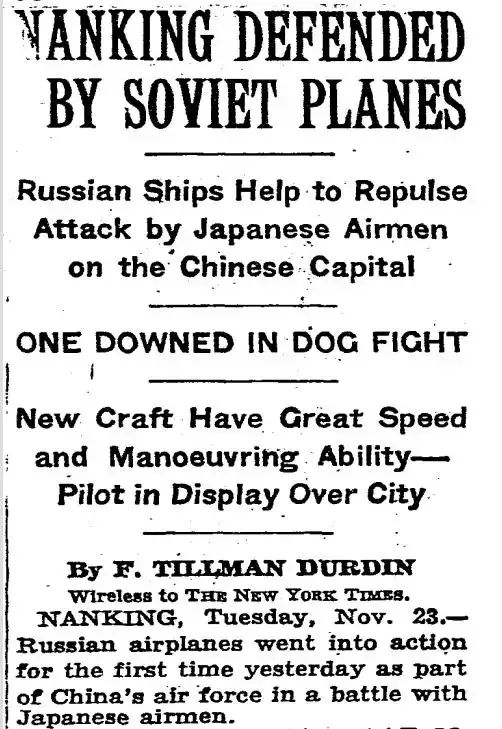
The New York Times report: "Nanking Defended by Soviet Planes"
Defending Nanjing to the Death
On the morning of December 1, 1937, Sergei Prokofievich Jenisov led a squadron of 23 fighter aircraft from the Soviet fighter regiment to Nanjing. In the afternoon of the same day, Kidalinsky led a squadron of 20 bombers from the bomber regiment to land in Nanjing.
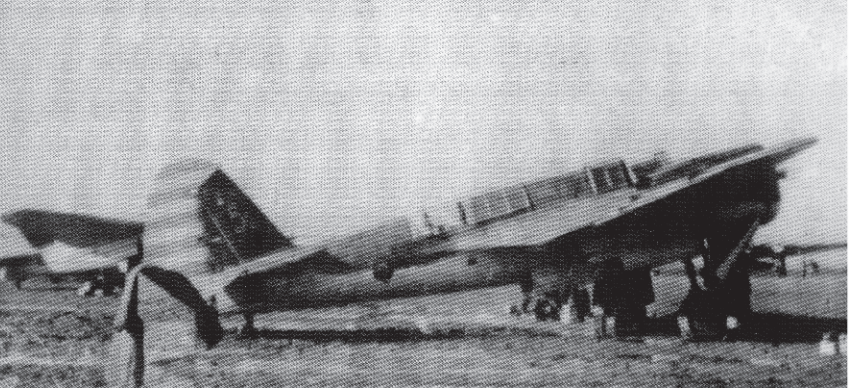
On December 1, 1937, the Soviet Volunteer Air Squadron arrived in Nanjing. The photo shows a Soviet SB-2 bomber.
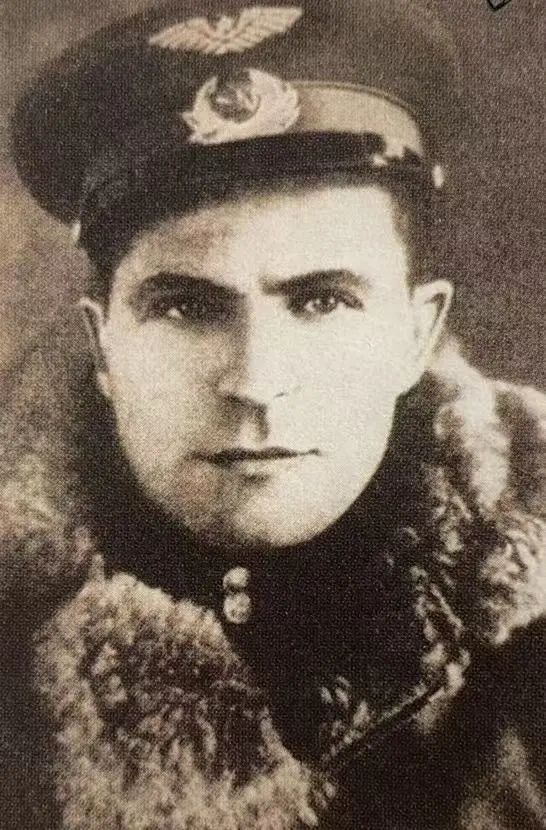
Sergei Prokofievich Jenisov
On December 1, Soviet fighters took off five times to intercept Japanese aircraft attacking Nanjing, shooting down three Japanese planes while losing two of their own. Soviet pilot Andreev was killed in action, while Remizov survived by parachuting to safety.
On December 2, nine bombers from the Soviet Volunteer Air Squadron departed from Nanjing. They flew to Shanghai to bomb Japanese airfields and warships. During the mission, navigator Petrov was killed, and pilot Salonen was wounded. Despite his injuries, Salonen persisted in flying the aircraft back to Nanjing.
On December 3, Japanese aircraft launched a surprise attack on the Dajiaochang airfield in Nanjing. Pilots Dong Mingde, Le Yiqin, Kudinov, and others took off to engage the enemy. According to Japanese sources, the Chinese and Soviet pilots who scrambled were extremely valiant, turning the tide of the battle and giving the Japanese Army Air Force reconnaissance squadron, which lacked fighter escort, a tough time. Even the lead aircraft of the Japanese formation was shot down.
In his memoirs, Kudinov recounted the life-and-death struggle with the Japanese aircraft that day: "The enemy planes had already approached the airfield and began to dive clumsily towards us. A thought flashed through my mind—to shoot straight up like a partridge taking off. I abandoned the idea of retracting the landing gear, pushed the throttle to the limit, and charged head-on at the Japanese plane! But the enemy had already opened fire from a distance, about 300 meters away, and I felt my 'Crane Eagle' shudder. The enemy plane hastily avoided my nose, diving sharply beneath me before climbing back up. ... Dong excitedly told me that he had shot down a 'Tenno.'"
During the battle, Le Yiqin's aircraft was hit and damaged. He was forced to parachute out, but unfortunately, he died upon impact with the ground at the young age of 22. Faced with the sacrifice of his comrade, Kudinov felt very depressed. He wrote: "The Chinese pilot was killed. We didn't make it back to the airfield. Several other Chinese pilots whom we had already known didn't have time to take off and were also killed."

A Soviet SB bomber crashed into a pond outside Nanjing Dajiaochang Airport.
From November 1937 to December 3, Chinese and Soviet pilots shot down 20 Japanese aircraft. They carried out multiple attacks on Japanese planes that violated Nanjing's airspace.
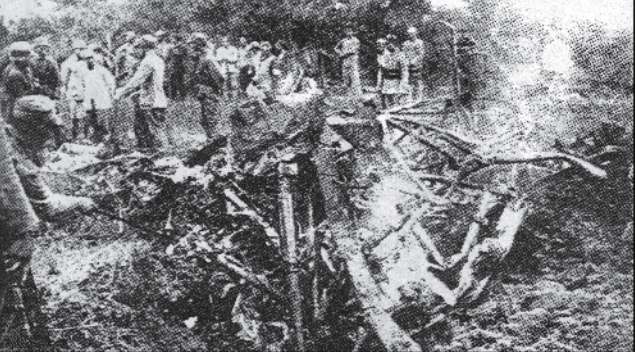
Wreckage of a Japanese aircraft shot down in Nanjing.
However, due to the overwhelming disparity in forces, Chinese and Soviet aircraft were forced to withdraw just before the Japanese occupation of Nanjing. On December 6, the Aviation Commission issued an order to retreat. The Chinese Air Force and the Soviet Volunteer Air Squadron stationed in Nanjing evacuated and gradually relocated to Hankou, Nanchang, and Guangzhou.
Engraved in Memory
During the period of the War of Resistance, over 2,000 Soviet pilots joined the Soviet Volunteer Air Squadron. Above many Chinese cities, including Nanjing, Nanchang, Guangzhou, Chongqing, Chengdu, and Xi'an, they left their marks as they fought fiercely against the Japanese forces.
More than 200 Soviet pilots were killed in action, during training, and in various accidents, including bomber squadron commander Grigory Arimovich Kurikhenko and fighter squadron commander Rakhmanov.
Today, in places where the Soviet Volunteer Air Squadron fought, such as Nanjing and Wuhan, dedicated cemeteries and memorial halls can be found. In our memorial hall, the "Nanjing Massacre Exhibit" and the "Three Prevails" exhibition halls both feature sections dedicated to the Soviet Volunteer Air Squadron.
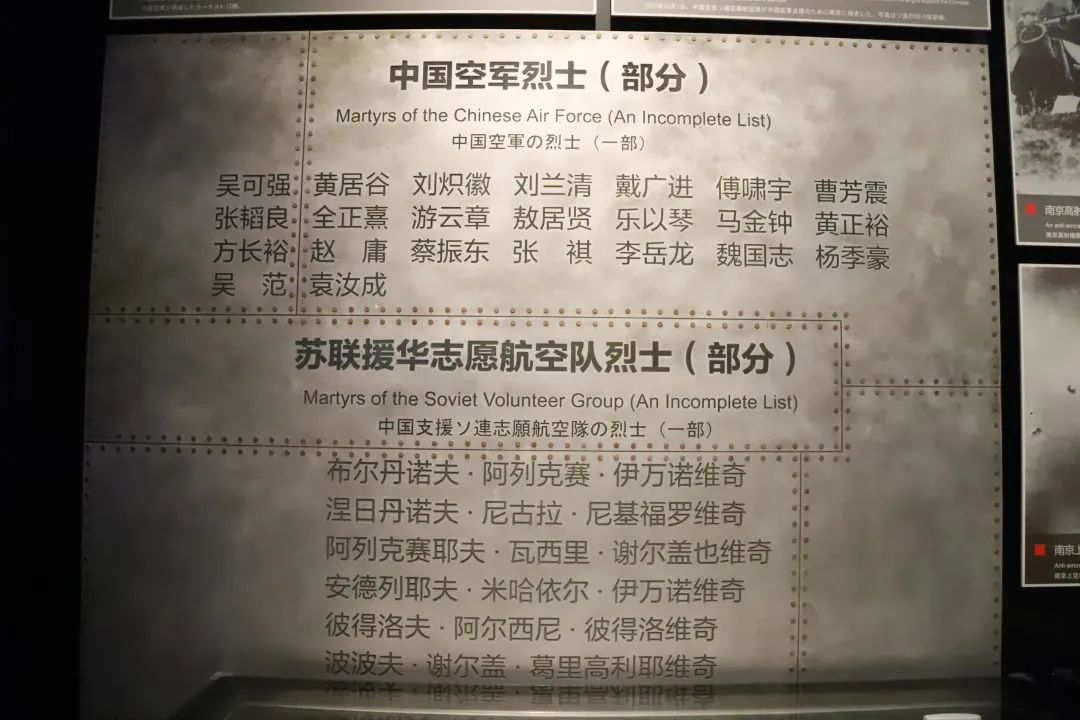
A partial list of martyrs displayed in the “Nanjing Massacre Historical Exhibition” at our memorial.
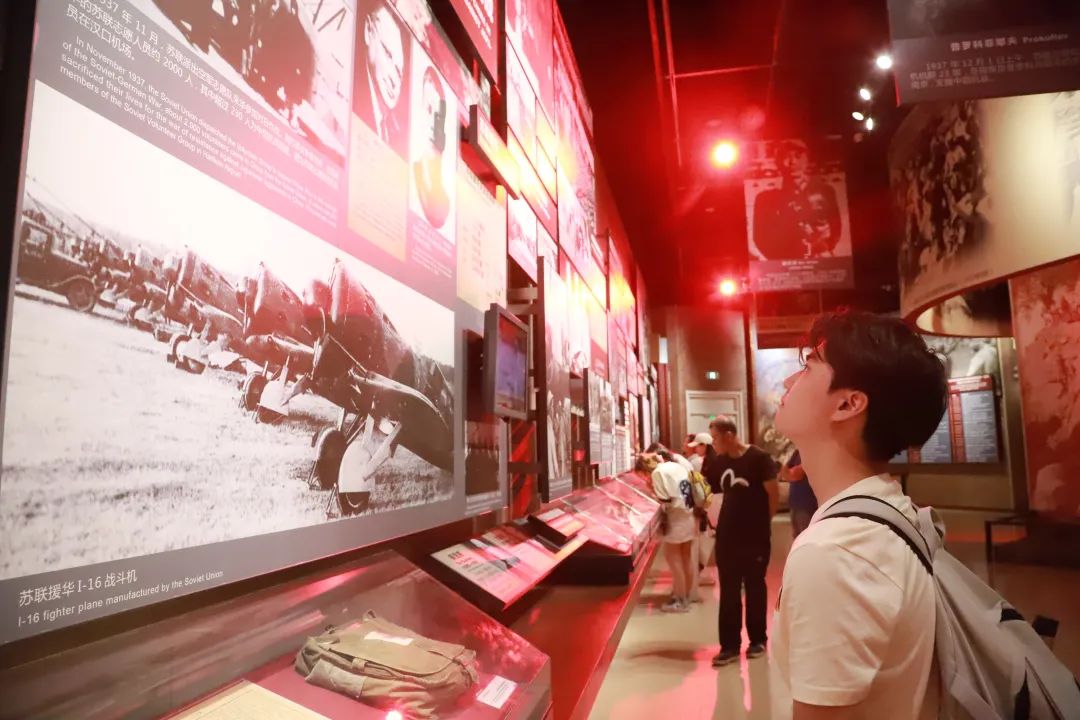
Visitors stop to watch the exhibition panel introducing the Soviet Volunteer Air Squadron in the "Three Prevails" Exhibit Hall at our memorial.
In the list of famous anti-Japanese martyrs and heroic groups published by the Ministry of Civil Affairs and the Ministry of Veterans Affairs, five Soviet pilots from the Soviet Volunteer Air Squadron are included, among whom Nikolai Nikiforovich Nezhdanov, who sacrificed his life in the Nanjing air battle, is listed. Their stories will always be remembered by the Chinese people.
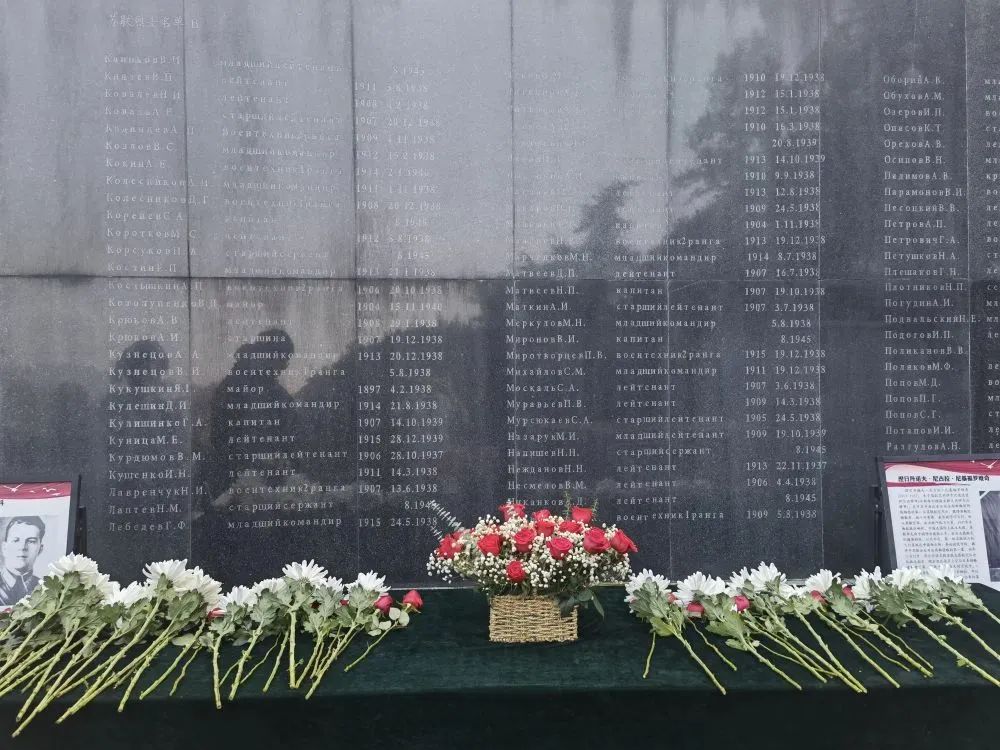
The monument is inscribed with the names of Soviet anti-Japanese aviation heroes at the Nanjing Anti-Japanese Aviation Martyrs Memorial Hall (Source: Xinhua News Agency).

